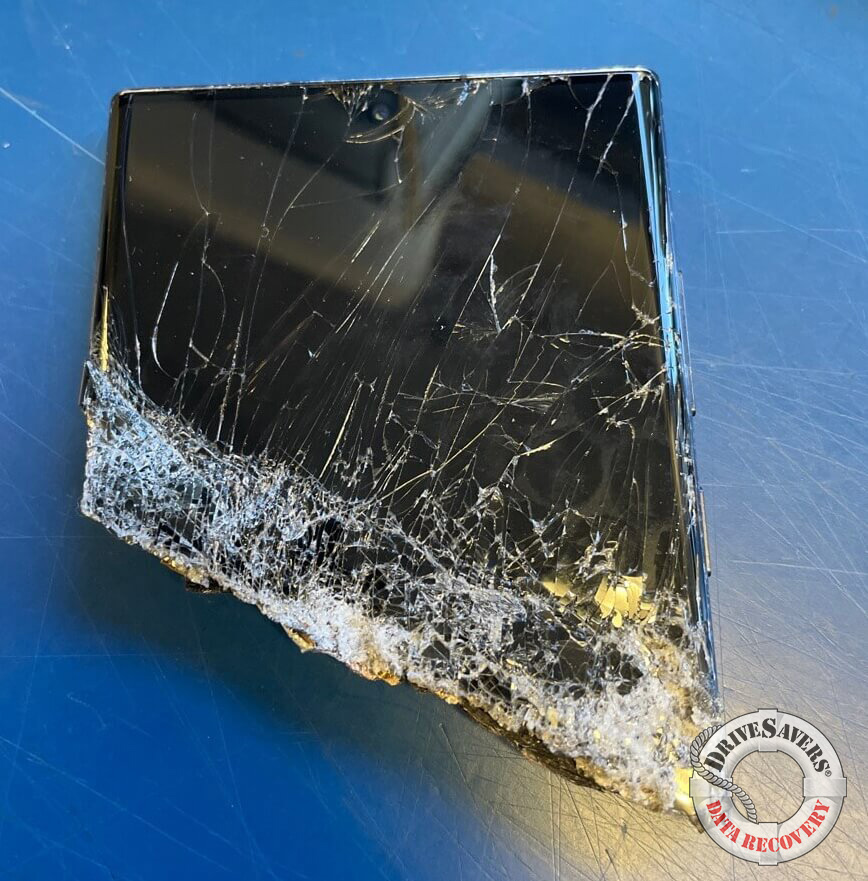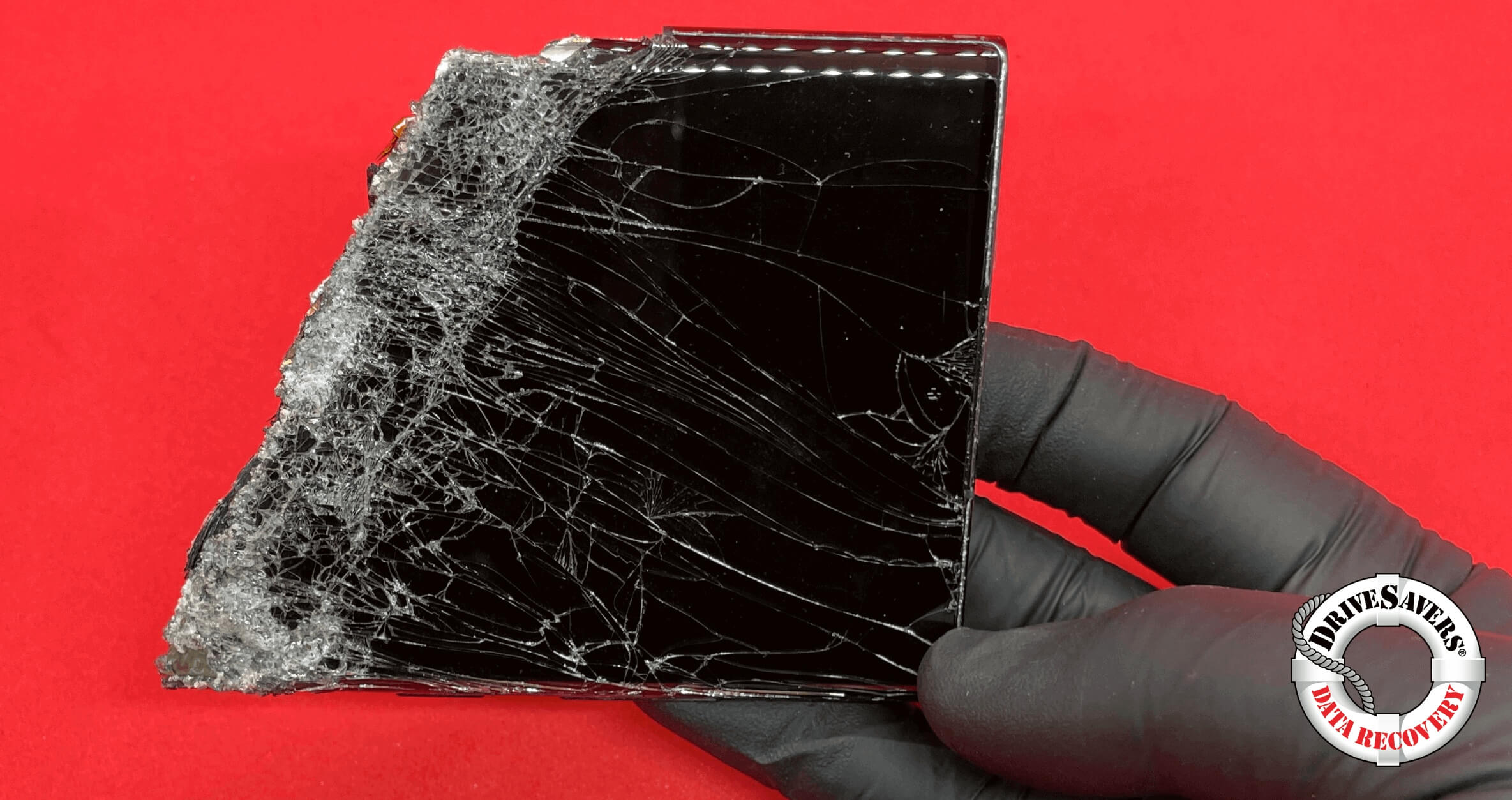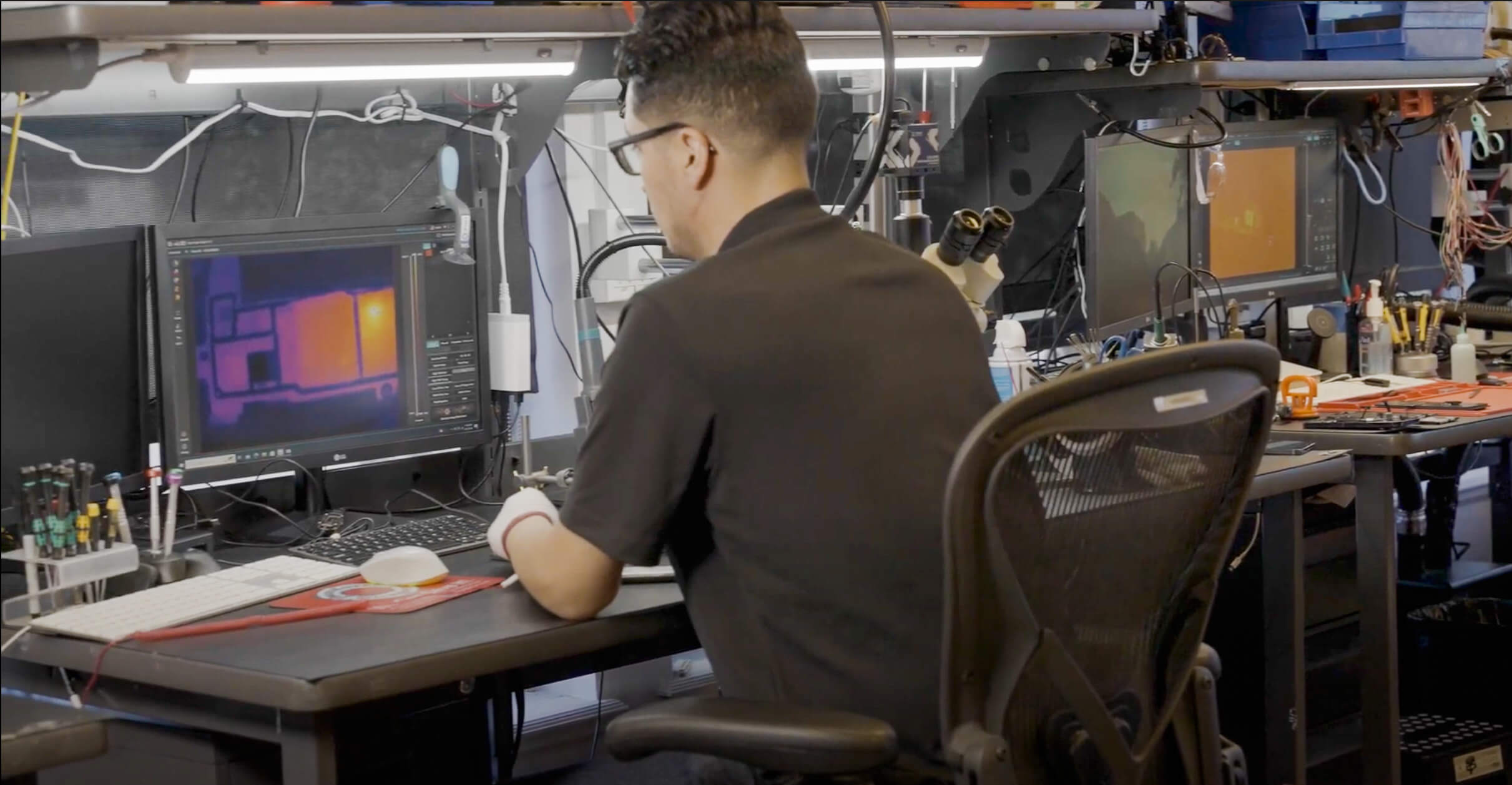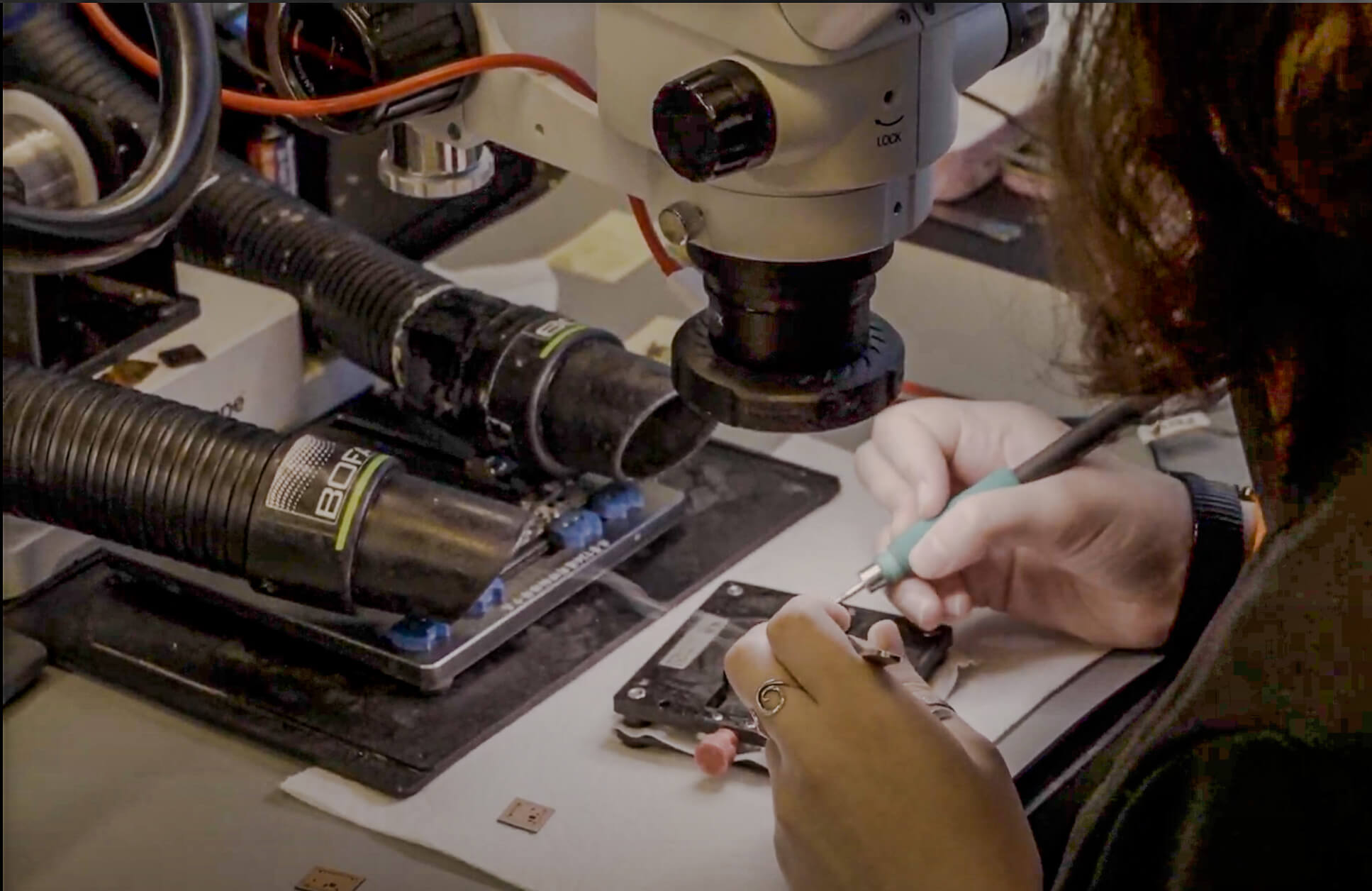A magnetised case, a sheet pan, and an iPhone that accidentally joined dinner.
Case Study: Data Recovery from Bisected Samsung Galaxy
The customer approached DriveSavers with half of a severely damaged Samsung Galaxy S22 Ultra. The device had been cut in half by a monorail system, and only the top portion was recovered from the scene. The phone contained invaluable personal data, most notably photographs and videos of the customer’s recently deceased grandmother. The severity of the damage made this case particularly challenging, as conventional methods to get data off of broken phones were not an option.

Recovering data from a phone that was literally cut in half presented unique challenges. By carefully transplanting the critical components onto a functional board and employing custom recovery techniques, we were able to retrieve our client’s invaluable memories. This case shows that with the right expertise and determination, it’s possible to recover data from even severely damaged phones.–Matthew Burger, Lead Flash Engineer

The challenge was the catastrophic damage to the device. With only half of the phone remaining, all components had suffered significant trauma. The critical data was stored on the device’s internal memory chip, fortunately located in the retrieved portion. However, accessing this data required rebuilding the phone’s functionality using severely compromised components.
Standard recovery techniques proved inadequate due to the extent of the damage. The team needed to develop a custom solution that would allow them to boot the device and access its data. This process was complicated by the extreme fragility of the remaining components and the instability of the system after component transplantation.
The DriveSavers team devised an innovative approach to recover photos from the broken phone. They carefully extracted the critical components, including the CPU, RAM, and storage chip from the remnants of the device.

These components were then meticulously transplanted to a known working PCB (Printed Circuit Board) to create a functional system.
The process involved multiple boot attempts, with the team adjusting their techniques based on the device’s response. They performed intricate work, including reballing the storage IC. To verify the integrity of their BGA rework, the team utilized X-ray technology. Despite confirming a successful transplant, the components remained highly unstable.
In a crucial breakthrough, the team developed a custom, proprietary method to coax the last bit of functionality from the dying storage chip. This delicate process required precise control and timing to retrieve the data without causing further damage to the fragile components.

The recovery effort was successful, demonstrating an effective method to recover data from broken phones. The team at DriveSavers managed to recover the majority of the customer’s critical data, including all the irreplaceable photos and videos of the customer’s grandmother. The data was restored to a secondary device, with only minor losses in some apps and messages.
The successful data recovery of half of a smartphone shows the effectiveness of data recovery technology used at DriveSavers and the engineers’ ability to implement custom recovery solutions in scenarios involving fragile and extremely damaged devices. It also highlighted the importance of understanding the physical limits of electronic components and the potential for innovative techniques, such as X-ray technology, in data recovery.
This successful recovery demonstrates DriveSavers Data Recovery’s commitment to recovering critical data regardless of the extent of device damage. It serves as a prime example of how expertise, innovation, and determination can provide solutions for data retrieval from broken phones, even in seemingly impossible scenarios.

- Even in cases of catastrophic physical damage, data recovery may still be possible with the right expertise, techniques, and tools.
- Understanding the physical properties of electronic components, including their behavior under different temperatures, can be crucial in data recovery.
- Innovative thinking and custom solutions are often necessary when dealing with unprecedented situations.
- The recovery of critical data, such as sentimental irreplaceable photos, can have profound effects on individuals’ lives.
- Pushing the boundaries of what’s possible in data recovery drives innovation in the field.
*DriveSavers Standard Turnaround times are 1-2 Business days, Economy 5-7 Business days, and Priority 24/7 service – on occasion, unique circumstances require more time and are approved by the customer.






